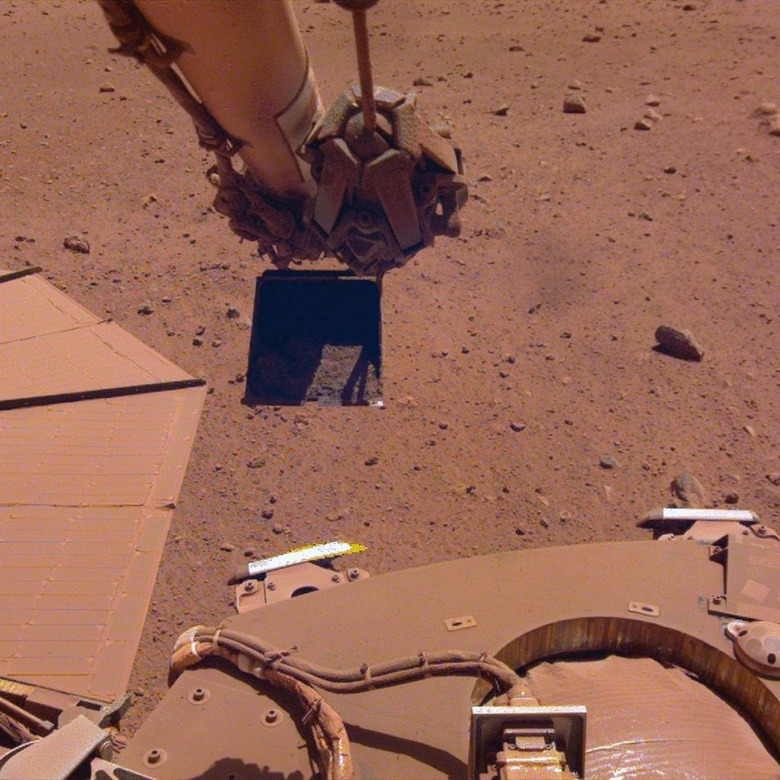NASA's InSight Mars Lander Just Gave Itself A Dust Bath
NASA's InSight lander is giving itself an unexpected shower, taking advantage of Mars soil for a counter-intuitive way to clear off its solar panels for a much-needed recharge. The lander – which has been on the red planet since late 2018 – relies on solar power to operate its scientific instruments, but a build-up of dirt on the panels has made that an increasing challenge.
Without power, InSight not only can't continue operations, but it risks freezing altogether in the cold Martian nights. With Mars approaching its farthest point from the Sun, the plan had always been to conserve energy as much as possible and shut down everything but the bare essentials for the next few months.
Any time spent like that, however, basically takes away from potential research time, and so the team remotely managing the lander had been trying to figure out ways to potentially increase the amount of charging InSight could do. A previous attempt – using the same motors which unfurled the two 7.1-foot wide circular solar panels to shake them minutely, in the hope that it would dislodge the dust on top – failed, but a second strategy has been unexpectedly successful.

InSight used the scoop on the end of its robotic arm to pick up Martian dust, and then trickle it next to – though not on – the solar panels. The idea, first suggested by Matt Golombek of NASA's JPL, was to basically bounce grains which the Mars wind would then whip across the surface of the panels, in the process sweeping away smaller grains that were impairing their efficiency.
NASA gave it a try on May 22, 2021, picking the windiest point of the Martian day to give the procedure its best shot of working out. "It was easiest for InSight's arm to be positioned over the lander's deck, high enough for the winds to blow sand over the panels," NASA explains. "Sure enough, with winds blowing northwest at a maximum of 20 feet (6 meters) per second, the trickling of sand coincided with an instantaneous bump in the spacecraft's overall power."
In fact, the team saw an uptick of around 30 watt-hours of energy per sol, or Martian day. Although insufficient to keep InSight running all the way through the upcoming aphelion period, it should allow the instruments to continue operations for a few extra weeks. Come August, meanwhile, Mars will begin to move closer to the Sun again, and scientific work can start to continue once again.
NASA plans to attempt another dust bath on Saturday, June 5, to see if it can further clear the panels.
